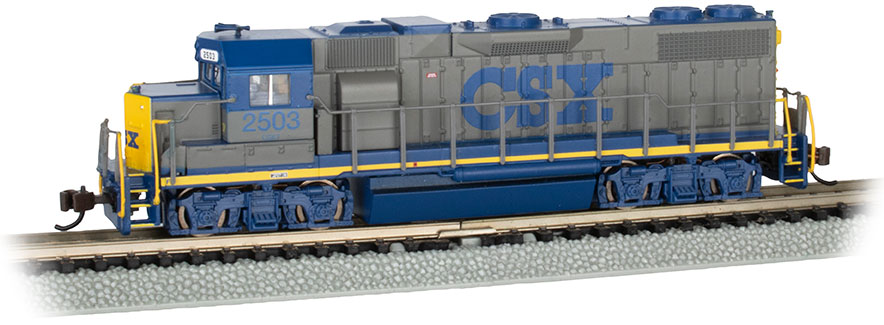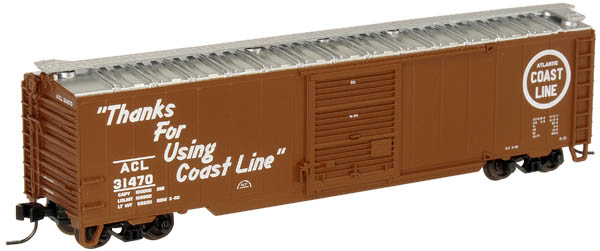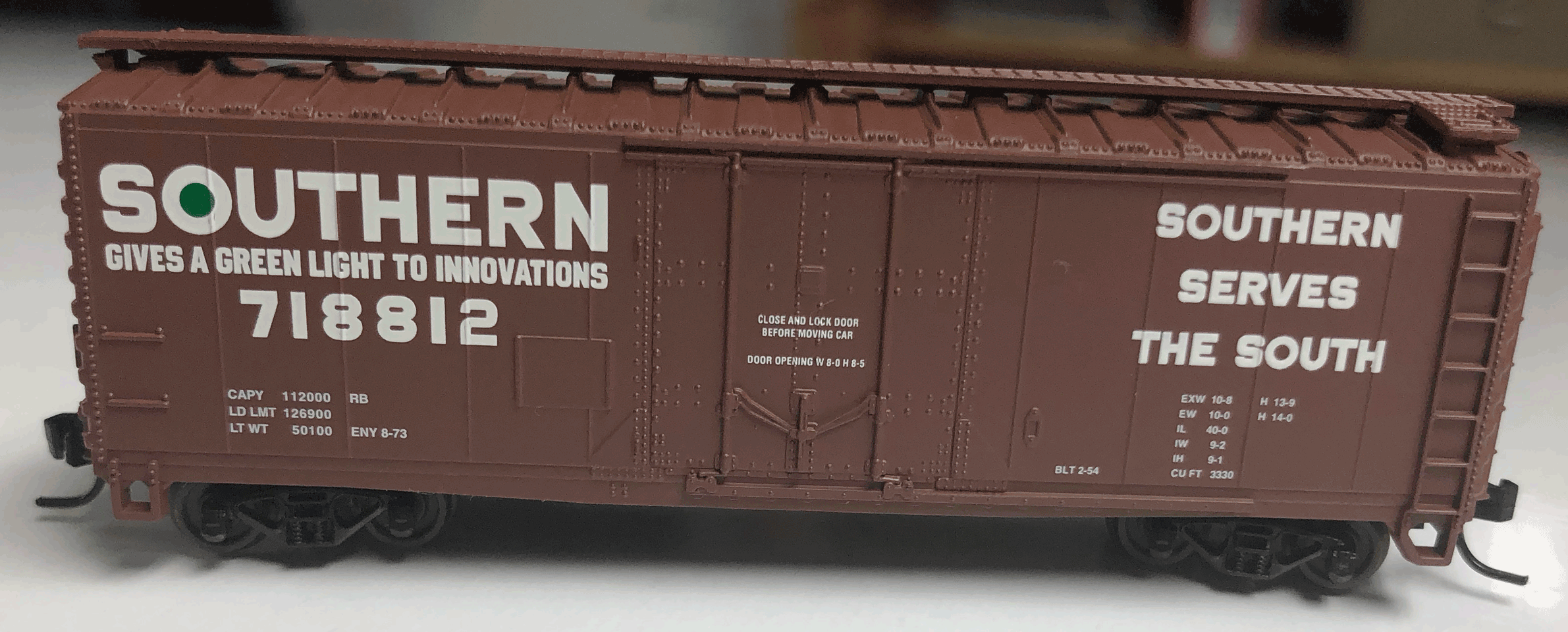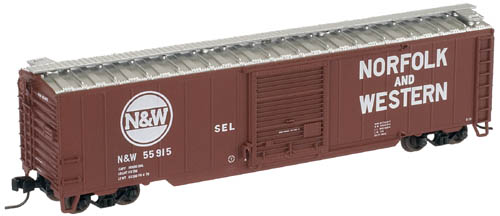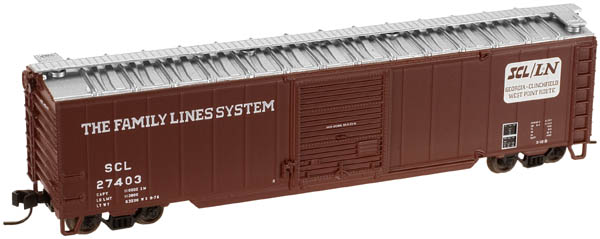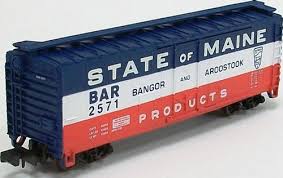Specific Item Information: EMD’s diesel-electric road switcher, the GP38-2, began production in 1972 as an upgraded model of the earlier GP38. Looking almost identical to its predecessor thanks to a standard body and cab design used throughout the 1980s, the GP38-2 became widely used on railways across the country and can still be found in service today. Equipped with an EconamiTM SoundTraxx® sound decoder and factory-set for GP38-2 realism, the diesel package offers a choice of 5 prime movers, 16 airhorns, multiple variations of 7 bell types, 2 air compressors, 3 couplers, plus a function-activated grade-crossing signal—all in 16-bit polyphonic sound. The EconamiTM sound system includes adjustable auto-notching sensitivity for prototypical operation, adjustable master volume, individual sound effect volume levels, advanced consisting, and more.
Additional features include:
• DCC sound-equipped with EconamiTM Sound Value package • dual-mode NMRA-compliant decoder
• directional headlights with Rule 17 dimming
• precision motor
• flywheel
• die-cast frame
• fine-scale handrails
• separately applied detail parts
• E-Z Mate® Mark II couplers, front and rear
Model Information: EMD’s diesel-electric road switcher, the GP38-2, began production in 1972 as an upgraded model of the earlier GP38. Looking almost identical to its predecessor thanks to a standard body and cab design used throughout the 1980s, the GP38-2 became widely used on railways across the country and can still be found in service today. Equipped with an EconamiTM SoundTraxx® sound decoder and factory-set for GP38-2 realism, the diesel package offers a choice of 5 prime movers, 16 airhorns, multiple variations of 7 bell types, 2 air compressors, 3 couplers, plus a function-activated grade-crossing signal—all in 16-bit polyphonic sound. The EconamiTM sound system includes adjustable auto-notching sensitivity for prototypical operation, adjustable master volume, individual sound effect volume levels, advanced consisting, and more.
Additional features include:
• DCC sound-equipped with EconamiTM Sound Value package • dual-mode NMRA-compliant decoder
• directional headlights with Rule 17 dimming
• precision motor
• flywheel
• die-cast frame
• fine-scale handrails
• separately applied detail parts
• E-Z Mate® Mark II couplers, front and rear
Prototype History: The EMD GP38-2 is a four-axle diesel-electric locomotive of the road switcher type built by General Motors, Electro-Motive Division. Part of the EMD Dash 2 line, the GP38-2 was an upgraded version of the earlier GP38. Power is provided by an EMD 645E 16-cylinder engine, which generates 2000 horsepower (1.5 MW). Most built still remain in service in the modern era due to ease of maintenance and exceptional reliability.
The GP38-2 differs externally from the earlier GP38 only in minor details. Its most distinctive identifying feature is the cooling water level sight glass on the right side of the long hood. The battery box covers of the Dash 2s are bolted down instead of hinged. It can be distinguished from the contemporary GP39-2 and GP40-2 in that its Roots blown engine had two exhaust stacks, one on each side of the dynamic brake fan, if equipped, while the turbocharged GP39-2 and GP40-2 has a single stack. The GP39-2 has two radiator fans on the rear of the long hood like the GP38-2, while the GP40-2 has three. It was also available with either a high-short-hood, common on Norfolk Southern units, or a low-short-hood, which is found on most other railroads.
From Wikipedia
The GP38-2 differs externally from the earlier GP38 only in minor details. Its most distinctive identifying feature is the cooling water level sight glass on the right side of the long hood. The battery box covers of the Dash 2s are bolted down instead of hinged. It can be distinguished from the contemporary GP39-2 and GP40-2 in that its Roots blown engine had two exhaust stacks, one on each side of the dynamic brake fan, if equipped, while the turbocharged GP39-2 and GP40-2 has a single stack. The GP39-2 has two radiator fans on the rear of the long hood like the GP38-2, while the GP40-2 has three. It was also available with either a high-short-hood, common on Norfolk Southern units, or a low-short-hood, which is found on most other railroads.
From Wikipedia
Road Name History: CSX Transportation (reporting mark CSXT) is a Class I railroad in the United States. The main subsidiary of the CSX Corporation, the railroad is headquartered in Jacksonville, Florida, and owns about 21,000 route miles (34,000 km). CSX operates one of the three Class I railroads serving most of the East Coast, the other two being the Norfolk Southern Railway (NS) and Canadian Pacific Railway. It also serves the Canadian provinces of Ontario and Quebec. Together CSX and Norfolk Southern Railway have a duopoly over all east-west freight rail traffic east of the Mississippi River. As of October 1, 2014 CSX's total public stock value was slightly over $32 billion.
CSX Transportation was formed on November 1, 1980, by combining the railroads of the former Chessie System with Seaboard Coast Line Industries, and finally with the Seaboard System Railroad in 1986. The originator of the Seaboard System was the former Seaboard Air Line Railroad, which previously merged with the Atlantic Coast Line Railroad in 1967, and later with the Louisville & Nashville Railroad, as well as several smaller subsidiaries such as the Clinchfield Railroad, Atlanta & West Point Railroad, Monon Railroad and the Georgia Railroad. The origin of the Chessie System was the former Chesapeake & Ohio Railway, which had merged with the Baltimore & Ohio Railroad, and the Western Maryland Railway.
Read more on Wikipedia.
CSX Transportation was formed on November 1, 1980, by combining the railroads of the former Chessie System with Seaboard Coast Line Industries, and finally with the Seaboard System Railroad in 1986. The originator of the Seaboard System was the former Seaboard Air Line Railroad, which previously merged with the Atlantic Coast Line Railroad in 1967, and later with the Louisville & Nashville Railroad, as well as several smaller subsidiaries such as the Clinchfield Railroad, Atlanta & West Point Railroad, Monon Railroad and the Georgia Railroad. The origin of the Chessie System was the former Chesapeake & Ohio Railway, which had merged with the Baltimore & Ohio Railroad, and the Western Maryland Railway.
Read more on Wikipedia.
Brand/Importer Information: Bachmann Industries (Bachmann Brothers, Inc.) is a Bermuda registered Chinese owned company, globally headquartered in Hong Kong; specializing in model railroading.
Founded in Philadelphia, Pennsylvania, the home of its North American headquarters, Bachmann is today part of the Kader group, who model products are made at a Chinese Government joint-venture plant in Dongguan, China. Bachmann's brand is the largest seller, in terms of volume, of model trains in the world. Bachmann primarily specializes in entry level train sets, and premium offerings in many scales. The Spectrum line is the high quality, model railroad product line, offered in N, HO, Large Scale, On30, and Williams O gauge all aimed for the hobbyist market. Bachmann is the producer of the famous railroad village product line known as "Plasticville." The turnover for Bachmann model trains for the year ended 31 December 2006 was approximately $46.87 million, a slight increase of 3.36% as compared to 2005.
Founded in Philadelphia, Pennsylvania, the home of its North American headquarters, Bachmann is today part of the Kader group, who model products are made at a Chinese Government joint-venture plant in Dongguan, China. Bachmann's brand is the largest seller, in terms of volume, of model trains in the world. Bachmann primarily specializes in entry level train sets, and premium offerings in many scales. The Spectrum line is the high quality, model railroad product line, offered in N, HO, Large Scale, On30, and Williams O gauge all aimed for the hobbyist market. Bachmann is the producer of the famous railroad village product line known as "Plasticville." The turnover for Bachmann model trains for the year ended 31 December 2006 was approximately $46.87 million, a slight increase of 3.36% as compared to 2005.
Item created by: CNW400 on 2020-07-25 16:44:39. Last edited by CNW400 on 2021-03-29 09:53:08
If you see errors or missing data in this entry, please feel free to log in and edit it. Anyone with a Gmail account can log in instantly.
If you see errors or missing data in this entry, please feel free to log in and edit it. Anyone with a Gmail account can log in instantly.


